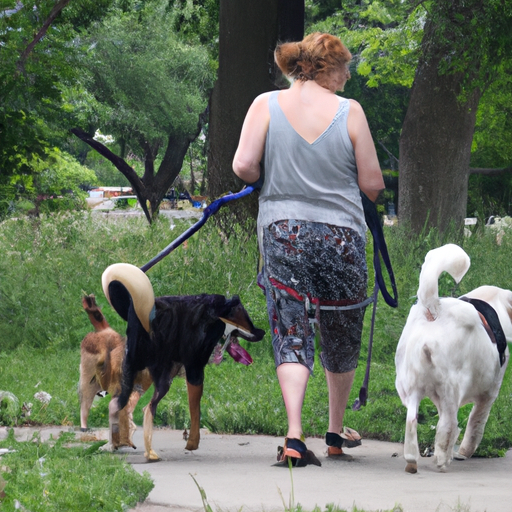Walking two dogs at once can be a truly enjoyable experience. It’s an opportunity to bond with your furry friends and get some exercise, all while enjoying the great outdoors. However, for those who are new to it or have dogs with differing temperaments, it can be a daunting task. Here’s a comprehensive guide to help you navigate the process, written from the perspective of someone who’s been in your shoes.
H2: Understanding Your Dogs
First and foremost, it’s important to understand your dogs’ behaviors, temperaments, and physical capabilities.
- If one of your dogs is highly energetic and the other prefers a leisurely pace, it could be a challenge to walk them together.
- Similarly, if one is aggressive towards other dogs or easily distracted, it might be best to walk them separately.
Remember, every dog is unique and what works for one might not work for the other.
H2: Necessary Equipment
Before you embark on your walk, make sure you have the correct equipment.
- Leashes: Invest in sturdy, comfortable leashes. Retractable leashes can provide your dogs with more freedom to explore but can also lead to tangles if not managed properly.
- Harnesses: Harnesses can provide more control than a simple collar and are especially beneficial for dogs who pull.
- Couplers: These devices can link two leashes together, making it easier to manage both dogs with one hand.
| Equipment | Use |
|---|---|
| Leash | Control and direct movement |
| Harness | Distribute force evenly |
| Coupler | Connect two dogs |
H2: Training Your Dogs
Training is key to an enjoyable walk. If your dogs are not trained to walk nicely on a leash, it may be beneficial to work with them individually before attempting to walk them together. This will allow you to focus on one dog at a time and ensure they are comfortable with leash walking.
H2: On the Walk
When you’re out on the walk, be patient and consistent.
- Allow your dogs some freedom to sniff and explore, but also ensure they’re not pulling you off balance.
- If one dog is constantly pulling ahead, it might be beneficial to practice some on-leash training exercises to help them understand the need to stay by your side.
H2: Troubleshooting Common Issues
Even with preparation and training, there will likely be challenges. Here are some common issues and their solutions:
- Tangling: To prevent tangling, you can use a leash coupler or walk the dogs on opposite sides.
- Mismatched Pacing: If one dog walks faster than the other, try using a short leash for the faster dog to keep them closer to you.
- Aggression: If one dog is aggressive towards other dogs, consider seeking professional help.
Frequently Asked Questions
-
Can I walk two dogs of different sizes together?
Yes, but it may require a bit more attention to ensure the smaller dog isn’t being dragged along by the larger one. -
What if my dogs don’t get along?
It might be best to walk them separately or seek professional help to improve their relationship. -
Can I use one leash for two dogs?
It’s possible with a coupler, but it’s essential to have control over both dogs.
Remember, walking two dogs at once can be a fun and rewarding experience. It may take some time and patience, but with the right preparation, you can make it work. Happy walking!



